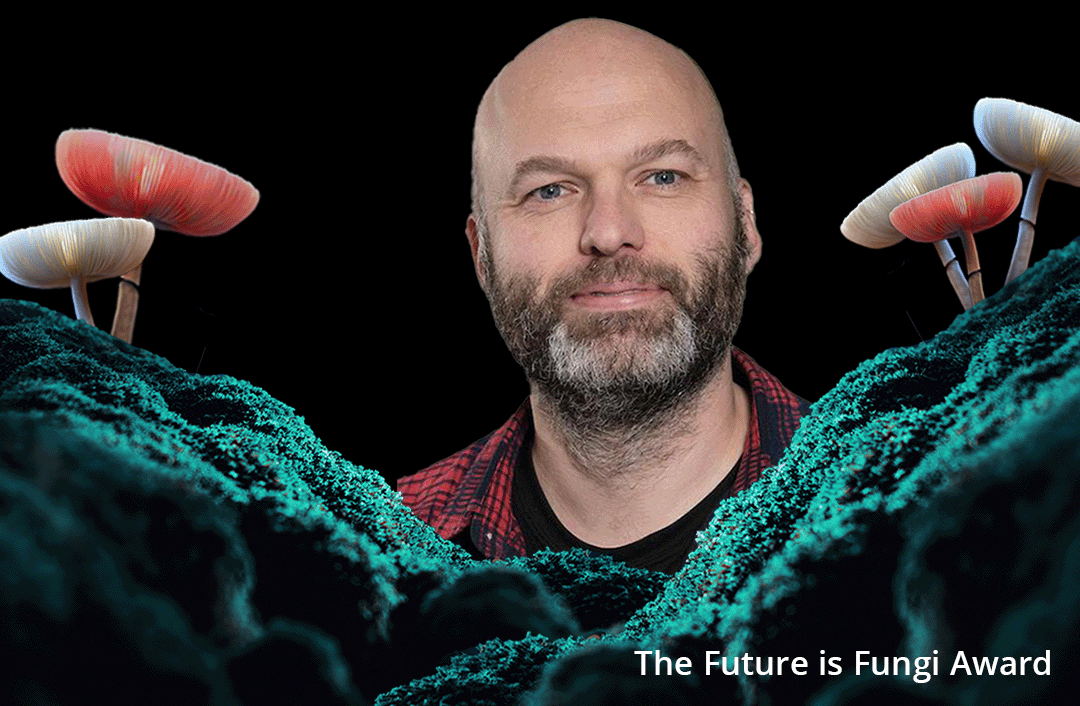Research winner
Jens Laurids Sørensen, for his pioneering work on fungal bio-batteries. His team's biosynthesized battery marks a crucial step in sustainable energy storage, addressing the challenge of aligning renewable energy production and consumption.
Read more about his research and what made him intrigued by the fungal space.
"In my group, we have developed the world’s first proof-of-concept biosynthesized battery, which can store energy from renewable sources such as solar panels and windmills. This addresses one of the major challenges in the green transition: efficient storage solutions for aligning production and consumption.
Our battery is based on organic molecules produced by fungi that act as electrolytes in an aqueous battery. Therefore, the battery presents a more sustainable alternative to the current models based on metal ions derived from mining. In the future, we envision that our battery can be commercialized and thereby significantly contribute to the green transition." - Jens Laurids Sørensen, PhD, Aalborg University
This truly shows a pioneering way of how fungi can be utilized for the sustainable solutions we need. The Future is Fungi Award is proud to announce such frontier and cutting- edge research as The Future is Fungi Awards first research winner.
Furthermore, Jens has not only contributed to the scientific community with his pioneering research but has also shown a commitment to translating academic achievements into real-world impact.
How did you get into fungal research, and where is your motivation coming from for utilizing fungi for more environmental solutions?
I have been interested in fungi since I was a student, and luckily been able to pursue this interest throughout my scientific career. Initially, my main interest lay in the metabolites produced by fungi during their interaction with plants. Subsequently, I shifted my focus to discovering novel metabolites. However, upon joining Aalborg University Esbjerg, my attention pivoted towards exploring innovative applications of fungi in facilitating the green transition. This shift was significantly influenced by Esbjerg's ambitions to emerge as the leading energy hub in Denmark and a focal point for green transition initiatives.
Tell us about your research! Why is this novel and new?
In my lab, we have developed the world’s first battery based on fungal metabolites. We are using a group of metabolites called quinones, which often give fungi their many beautiful colors. At present, the battery exists as a proof-of-concept lab-scale model, yet our ultimate goal is to create a larger-scale version.
How can this research help the world in a more sustainable direction? Our battery aims to solve one of the most important bottlenecks in the green transition, which is energy storage. As the electricity production and consumption are not aligned (for example, we often consume electricity in the evenings when the sun is gone and the wind is not blowing), the current batteries, based on metal ions derived from mining or petrochemicals, are not environmentally sustainable. Therefore, our battery presents a much more sustainable solution.
You now have a prototype. What is needed in order to get this out in the real world as usable batteries? Further, what help, expertise, and connections would be useful for you? The next step towards commercialization is making a large-scale battery and testing it on-site connected to a standard windmill. To achieve this, we will require large-scale production of our quinone, for which we will seek assistance from experts. My ambition is to start a company in Esbjerg where we produce the molecules and then use them in the already existing hardware.
What do you hope to see of developments in the fungal research & innovation domain? The fungal world is so amazingly diverse, and there are so many possibilities to explore and utilize in the future (food, biopolymers, building materials, medicine, enzymes, biofertilizers, space technologies, crop protection, etc.). AI can/will most likely become an important tool in the future, and I really hope that we will be able to understand and utilize all these possibilities. Finally, I hope that we become better at involving the community. Fungi are amazing to work with, and it is easy to involve schools or the public in the hunt for new fungi (or metabolites or enzymes).
What is needed in the ecosystem to accelerate the fungal revolution further for planetary wellbeing? First of all, we need more funding. But to attract funding, we often need good ideas or solutions to real-world problems. In my experience, generating new ideas and discoveries often happens through collaboration and inspiration from experts from other fields. Networking and an open mind are, therefore, crucial.
